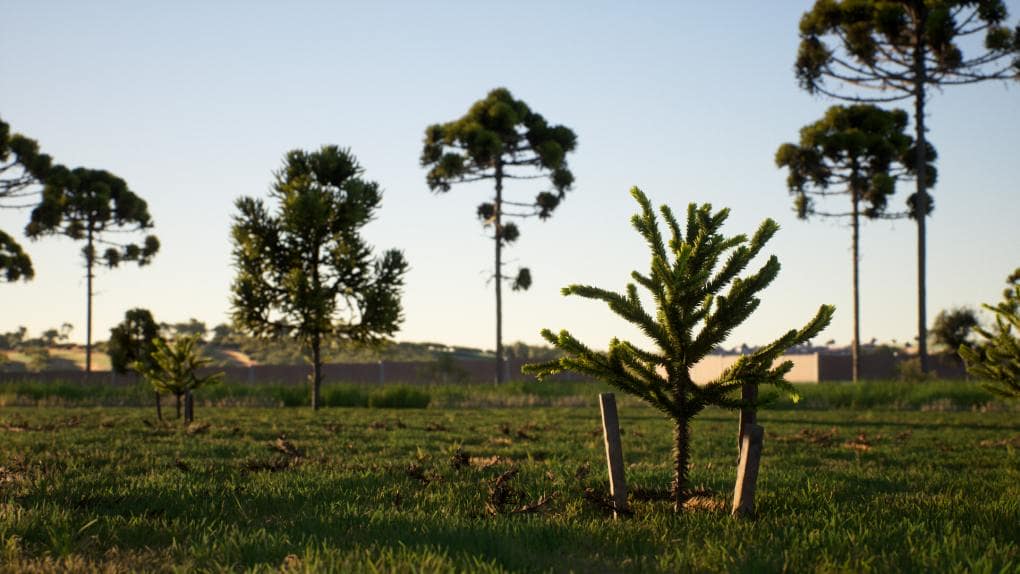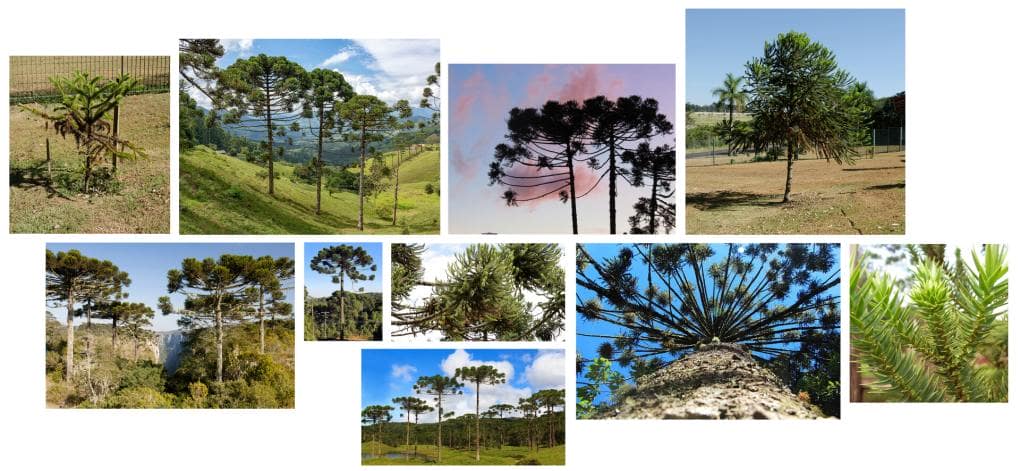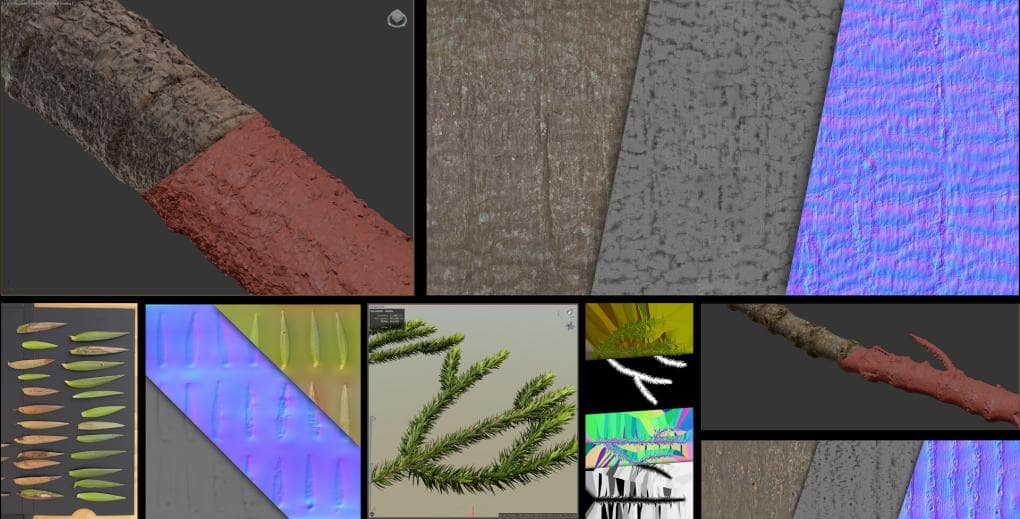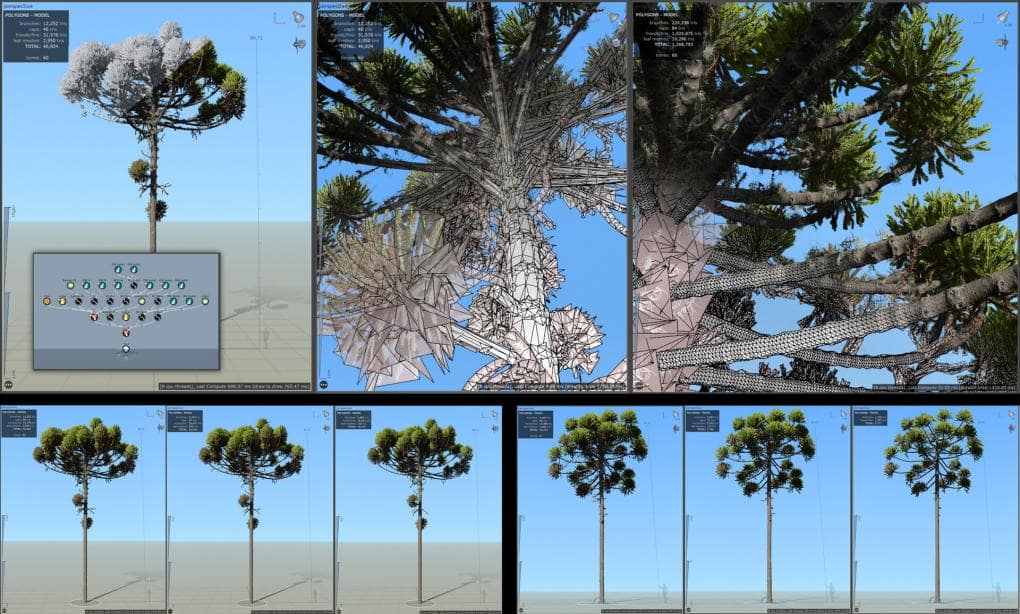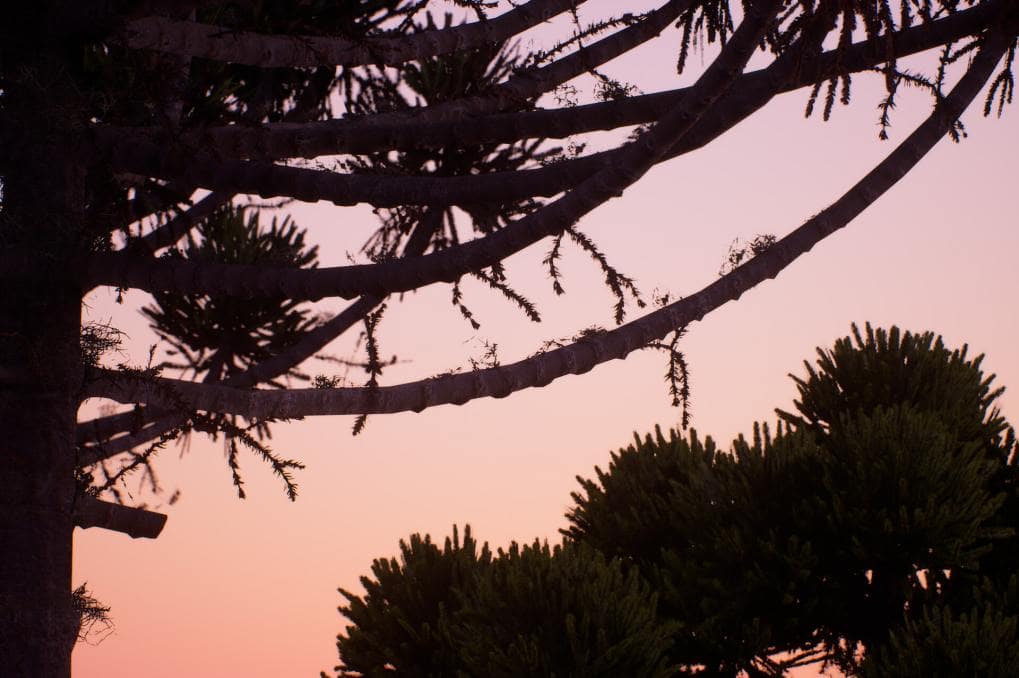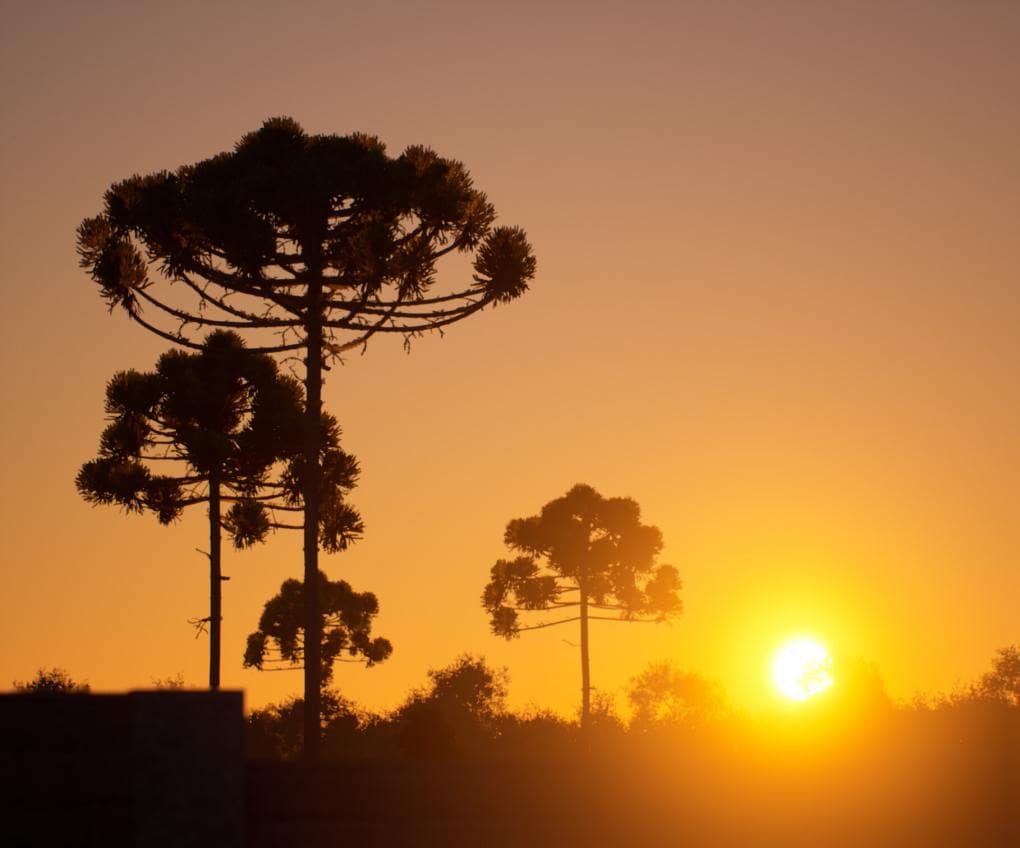Guilherme Rabello, the artist behind some of our library’s latest models, channels years of experience and a deep love of nature into his work. The Araucaria, also known as the monkey puzzle tree, is a complicated, towering conifer with thick, knobby bark and sharp leaves; Guilherme met this modeling challenge head-on and the results are a testament to his skill. Here, our fellow tree-nerd shares more about his process and the impressive Araucaria, plus a little bit of advice.
Amanda Windsor (AW): How did you get interested in SpeedTree? Do you see modeling trees as a separate from your other work or do they overlap?
Guilherme Rabello (GR): They both complement each other. Since I started working in archviz back in 2005, I have been fascinated by vegetation because it is difficult to faithfully reproduce, even in offline rendering. I always had the goal of getting vegetation as realistic as possible in my work. In 2014, I migrated to the real-time world with Unreal Engine 4 and that challenge became even greater because of performance limitations. In search of a tool that would help me with this challenging real-time workflow, I got to know SpeedTree. The rest is history!
GR: Araucaria angustifolia (pinheiro do paraná) is a species of pine that has lived on Earth for more than 200 million years (we are talking pre-Jurassic period). Each individual can live up to 450 years and reach up to 45 meters in height. It can be found in South America, mainly in the southern region of Brazil. They are currently at risk of extinction.
GR: My references for the these models are a mix of photos I found on the internet and pictures I took myself. Living near real Araucarias helped me a lot with rare references like seedlings and leaf variations.
GR: Bark materials were generated from photogrammetry scans of real Araucarias. Leaf materials came from a simple photo with the help of Photoshop and Substance B2M. They were used on high-detailed branch models, and those were used to generate branch atlases.
AW: Do you have any advice for artists getting started with photogrammetry? How do you make sure you get good scans for a model like this?
GR: Perhaps the most difficult thing at first is to determine the quantity and position of the photos. You will find many tips on the internet, but there is no magic formula. The best way to overcome this barrier is to do many tests with your equipment and software until you find the method that suits you. If you want to scan something, do it several times in different (but consistent) ways. Then, generate the meshes from the different sessions and compare how they affect your results. Be patient and don’t save time in the beginning so you can build enough knowledge to achieve good results in later time-limited situations.
GR: For the Araucauria, I created three tiers of models: VFX (up to 1.2 million tris), Game Hero (up to 45k tris), and Game Desktop (up to 15k tris). Each tier has at least 3 LODs.
AW: What is inspiring your work right now?
GR: I love nature and I love photography. Whenever I go hiking to photograph, I inevitably imagine how I can reproduce my experience in the virtual world so I can replay part of it whenever and wherever I want. Being in contact with nature (or missing it) inspires me to model it.
Guilherme Rabello graduated with a bachelor’s degree in computer engineering and a master’s degree in computer science. He has been working with 3D modeling in the architectural visualization field for 15 years. Guilherme is currently working as a researcher on an academic project in real-time archviz with Unreal Engine 4.
See more of Guilherme Rabello’s work:
ArtStation
Behance
Twitter
Instagram
Get the monkey puzzle tree for your project:
Araucaria v8: Games
Araucaria v8: Cinema

